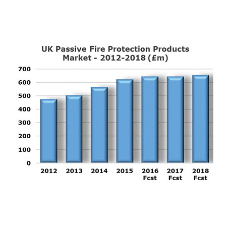Written by Paul Bussey, Associate, Scott Brownrigg
CDM 2015 is not a major departure from 2007 but it is arguably a radical attempt to further improve construction safety, whilst encouraging proportionate innovation and creativity of designers’ approaches and better business practices for all by a reduction in unnecessary bureaucracy.
As Professor Loefsted pointed out in his government report, the CDM regulations are generally fit for purpose, but need simplification and clarification to combat the overzealous misinterpretations which have hijacked the process into a quasi-legal paper chase. Risk averse members of the construction industry have taken moral high ground stances whilst passing their risks onto other duty holders to deliver solutions on their own without the support of a collaborative risk sharing approach as was originally intended.
The excellent intentions of Latham & Egan for the industry to better communicate, coordinate and collaborate have been lost and subverted as a result of overprotective professional indemnity insurance and other legalistic approaches to risk on what is criminal law, but is actually the implementation of common safety and common sense.
The target setting nature of the regulations are both their strength and their weakness. On the one hand, their non-prescriptive nature allows a considerable amount of interpretation and flexibility to achieve enhanced safety on projects. However, on the other hand, this leaves a huge ambiguity with respect to what constitutes a proportionate response to design and construction risks. How far is “so far as reasonably practicable (sfarp)” when it comes to designer duties which are all qualified by this seemingly obvious but actually very complicated legal term? Indeed, its interpretation is fundamental to collaborative design decisions on any project, and the words of some comfort for any designer confronted with a construction related safety investigation.
If sfarp is ”balancing the level of risks against measures needed to control the real risks in terms of money, time and trouble“ as stated in the regulations, what does this actually mean? Should the time and effort to deal with a low in probability but high consequence risk be the same as that for a low consequence but highly probable one?
Is there such a thing as a tolerable level of risk that accepts common place risks and only expects us to deal with ”significant risks” ie those risks that are not necessarily the greatest risks but those (H&S risks) that are not likely to be obvious (to a capable contractor), are unusual and are likely to be difficult to manage during design and construction effectively?
Whilst this is all rather confusing to the average client, architect, designer or contractor, it has been the responsibility of the “CDM coordination“ fraternity to unravel this relative complexity to help project teams deliver their aspiration successfully, especially within a CDM text. However because the CDM-C’s primarily perceived themselves to be Client Advisor without “designer responsibilities” this proportionate interpretation is left as an “impenetrable mystery” and the cause of a tangible “disconnect” within the industry.
The HSE have therefore decided, as recommended by the design professions of the industry, that this “Health and Safety Coordination“ function, role or duty, the Principal Designer, needs to be embedded into the design team as originally intended by the 1994 Regulations & the EU Directive.
This then allows the CDM issues to be considered at an early project stage within the design process and facilitates a design friendly approach to health and safety integration, whilst encouraging better and safer construction methods on site.
Further Information
Paul is an Associate Technical Consultant at Scott Brownrigg and has 35 years of experience as an architect, the last 20 years of which he has worked with architects and the wider industry to apply the CDM regulations to design projects.
Paul's book: CDM 2015 A practical guide for architects and designers is now available from RIBA Publications. There will also be a book launch next Wednesday 29th April at the Scott Brownrigg offices from 6 to 8pm. Click here for details.
Related Blog Articles


crop192.png)









